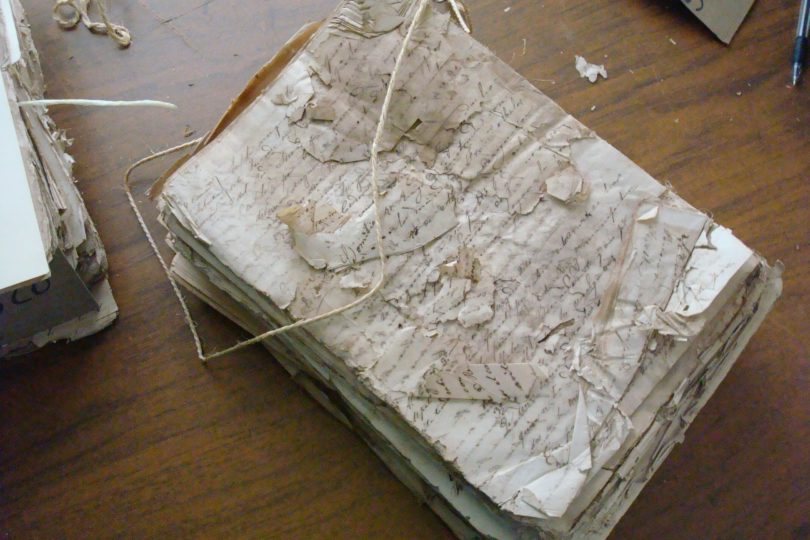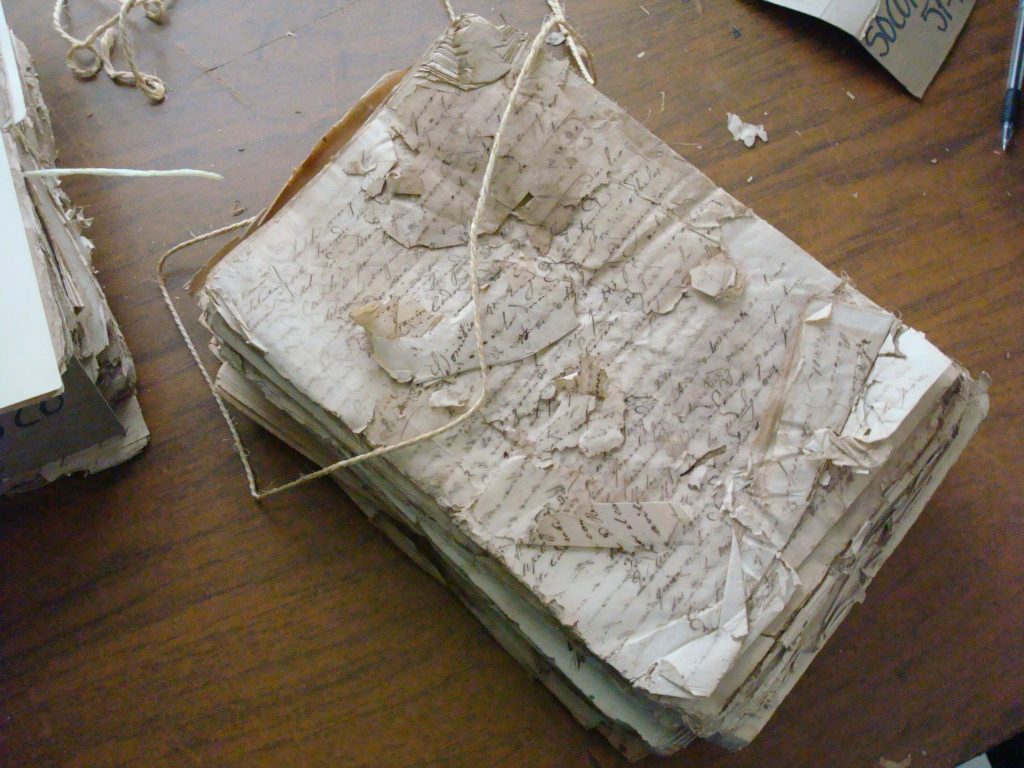
Casey Lurtz’ article, “Codifying Credit: Everyday Contracting and the Spread of the Civil Code in Nineteenth-Century Mexico,” appears in the February, 2021 issue of Law and History Review. This past month, Professor Lurtz was kind enough to discuss a few questions with The Docket about the genesis of her article, how she finally became a coffee drinker, and her new project.
The Docket [TD:] Your fascinating article begins with the earliest extant libro de conocimientos in the Tapachula municipal archive. We then follow you as you explore what you find within. Can you tell our readers how you came upon these documents and what it was like working with them in the archives?
Casey Marina Lurtz [CML]: Nineteenth century archives in the state of Chiapas are notoriously incomplete. The state archives have burned down at least three times and Tulane University holds more pre-1900 documents from Chiapas than exist in its capital today. The tireless undertakings of local historians and archivists, though, have increasingly exposed the wealth of documents that exist in local offices and government buildings. It’s thanks to Justus Fenner, a fantastic and generous local scholar, that I found my way into the archives in the Soconusco at all. He pointed me toward the two archives that allowed for more biographical detail in this article – the district level judicial archive and the public property registry – and made up the meat of my book, but we didn’t have time to search out the municipal archive, which he had found elusive.

As those two other spaces, still active government offices that just happened to have old papers piled on shelves in the back, provided more than enough to work with, I kept putting off hunting for the municipal archive. I visited the municipal palace (the town hall) a couple times to ask what they had, but the archive held there pertained to the 1950s onward and the small historical museum they sent me to didn’t have much. Finally, on my final research visit in the spring of 2015, some calling around led me to a tiny office above an Oxxo (the equivalent of a 7-11) across the street from the municipal palace. There, in boxes far more orderly than anything I had encountered elsewhere in town, with an archivist, Maria Eusebia Antonio Gómez, actually trained to the work, were decades of documents from the nineteenth century pertaining to the municipal council and court. She, though, had sad tales to tell of why I hadn’t found her until that point. Due to local politics, she and the man who oversaw the more recent papers in the municipal palace itself were not on speaking terms. Each claimed the mantle of official town archive and each displayed their own copy of the Mexican National Archive’s endorsement of their work. Maria Eusebia’s former supervisor and mentor, also a trained archivist who had done much of the work of preserving things like the libros de conocimiento, had been ousted and replaced by a former PE teacher not long before. The PE teacher had left, more or less out of boredom, but not before tearing up many documents and burning dozens of nineteenth century newspapers. Maria Eusebia had salvaged what she could – and what she could was quite impressive! – but she had not been paid in months and the archive’s power had been unreliable for weeks. I put her in touch with Justus and, together, they are working to better preserve the municipal papers, but the whole situation just hammered home how tenuous the state of archives in Chiapas continues to be.
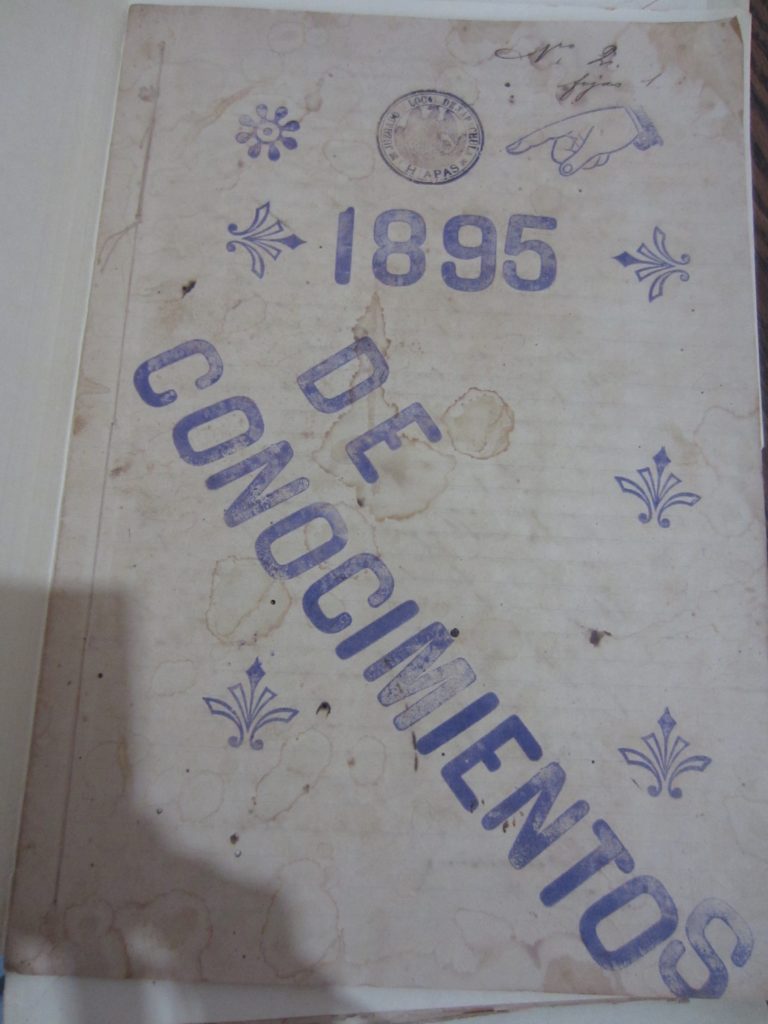
TD: Your article–and it seems your broader intellectual project–seems to lie at the crossroads between economic history and the history of legal culture. Both of these are, in different ways, experiencing significant resurgences. Has it been a challenge bringing these in dialogue with one another? Or have you found that practitioners within these fields are more open to ideas from the other than you might have previously expected?
CML: The broader research project that this article is a part of definitely came from my background in economic history, but I’ve always also been grounded in institutional and legal traditions. When we think of some of the big questions that trouble Mexican historiography of the nineteenth and early twentieth century, it’s impossible to avoid talking about land tenure, something that necessarily brings together legal and economic history. Economic historians also tend to pay attention to law, even if the legal culture aspect that you point to is not always their focus. As I started trying to figure out what to do with the libros de conocimiento, I assumed I would take a more economic approach, and most of the scholars I talked to also urged number crunching. Yet the numbers just wouldn’t do much for me – there aren’t enough of them and they’re quite messy, as the one chart in the article makes quite clear. The shift toward looking at legal culture, though, also came out of these conversations with economic historians as we all tried to figure out what in the world these documents were. Most hadn’t ever heard the phrase before – they definitely were not a kind of source people had run across in their own work – and this led us quite easily into discussions of bureaucracy and norms that sit more easily within legal history. I have to thank the University of Virginia MADCAP workshop for making me take the plunge into legal history. Unlike my Mexican economic history friends, Sarah Milov and Fahad Ahmad Bishara came at this paper without the baggage of Mexican economic history interests and pushed me to think much more about the larger legal contexts within which people in the Soconusco took up their new civil code. Yet even with that push, they also helped me think through some of the key insights that the numbers I generated from the libros could provide. So, to your question about dialogues across subfields, I have to say I had a very positive experience of people from both sides encouraging and facilitating a piece that I sincerely hope bridges the two.
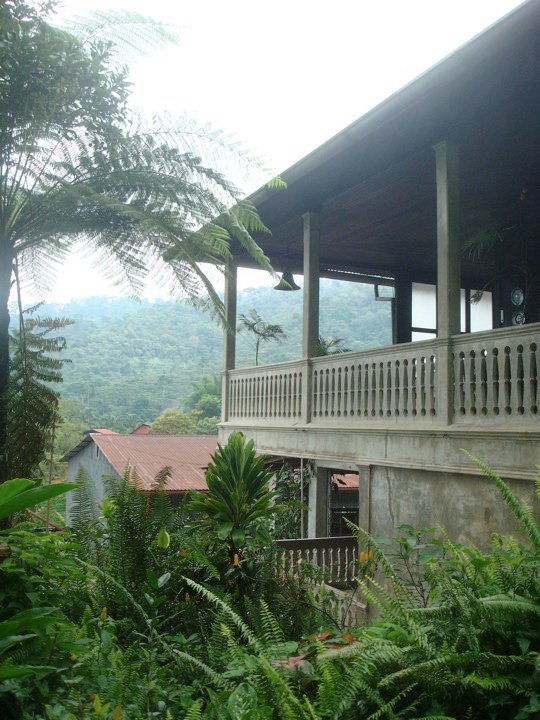
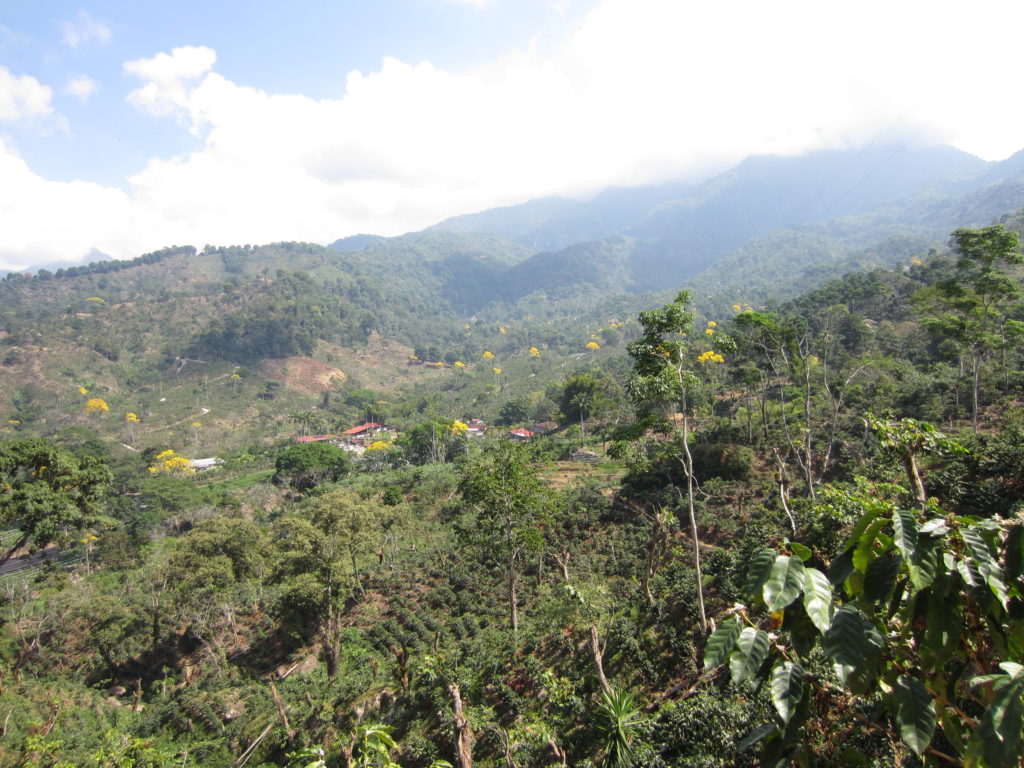
TD: Given the richness and complexity of your sources in the article, readers might be tempted to see the smaller scale contractual system and capital circulation among non-elites as a rival, alternate system of exchange to that which dominated bigger markets in Mexico City. Would that be an accurate portrayal, or were these two modes more clearly connected?
CML: While I understand the temptation, I don’t think I could set these two systems up as separate, let alone rival, modes of exchange and capital circulation. One of the larger points I am interested in exploring and forwarding with my work is that when non-elites took up forms and laws constructed by elites, they helped ensure the longevity of those forms and laws through their adaptation and usage. A loan between two villagers in Tapachula may not have looked precisely like a loan between two businessmen in Mexico City, but in determining that their exchange of credit fit within the terms defined to manage much larger sums of money, the two villagers entrenched the civil code that nominally governed all such transactions in actual practice. And because there were far more villagers in towns throughout Mexico than there were businessmen in Mexico City, those villagers drawing up contracts with each other had more to do with how most people encountered ideas of credit and debt and their enforcement than did Mexico City elites.
In the specific case of the Soconusco, we also see this in how larger scale loans between planters played out, something I treat in my book but did not really fit in this article. Firstly, at least some of the capital being exchanged in the libros de conocimiento originally entered the region through the hands of more elite actors. They borrowed money abroad or in Mexico City and then, in turn, loaned it out to smaller time actors, sometimes in agreements inscribed in the libros de conocmiento, sometimes through accounts at their general stores, sometimes through the purchase of small quantities of coffee beans. Secondly, and perhaps more importantly, we can see that the sort of flexibility that governed repayment (as far as I can tell) with regards to the loans registered in the libros also became a necessary part of mortgages backed by plantations and advance contracts for thousands of kilos of coffee. The coffee economy of the region was overwhelmed with easy credit in the 1890s, a bubble that burst when global coffee prices collapsed mid-decade. Those planters who held onto their land and their livelihoods tended to be those who had borrowed more locally or borrowed abroad with the mediation of merchants living in the region. Lenders familiar with the terrain were more willing and able to renegotiate and extend terms than those not in the Soconusco. This played out again in the following decade when the first banks entered the region. While very few planters managed to borrow money from banks to support their coffee plantations, almost all of those who did found themselves in foreclosure on those loans, which had much stricter terms and much less room for renegotiation. All of which is to say that the kinds of room for negotiation and flexibility that the libros record (where they do) when it comes to cancelation of contracts seems to have also become the norm for those elites who did well in the region. The strictures of the civil code didn’t have to be quite so strict if everyone was willing to approach them with an eye to adaptability.
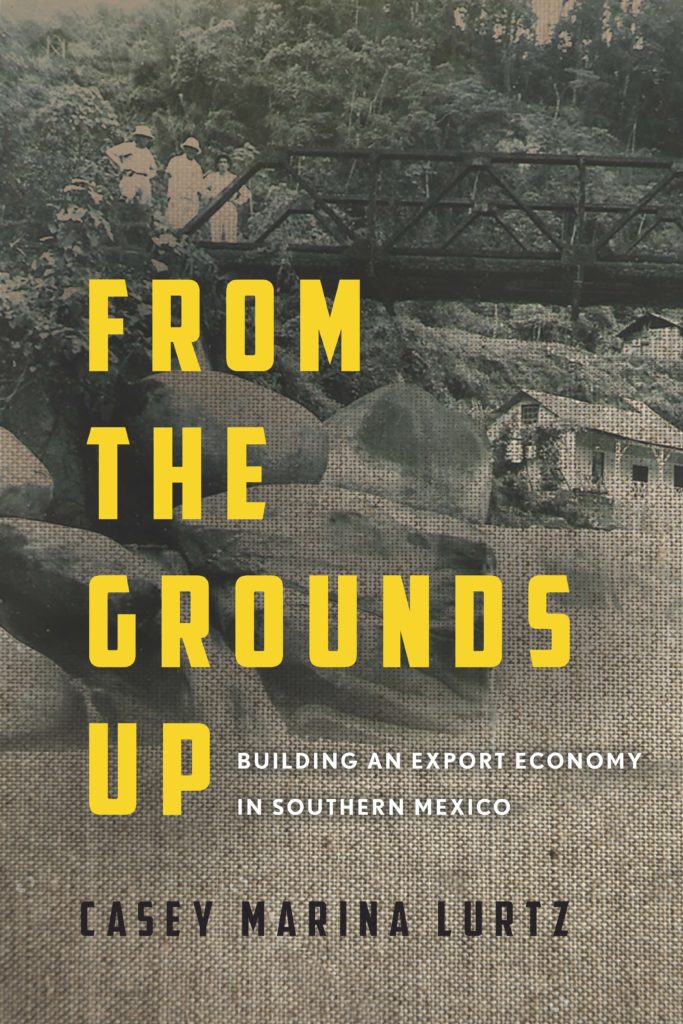
TD: We do of course need to talk about coffee! Your wonderful book, From the Grounds Up: Building an Export Economy in Southern Mexico (Stanford University Press, 2019), focuses on the transformation of the state and the coffee producing region of the Soconusco in Southern Mexico. Some of our readers will undoubtedly have read it and learned from it. But what about the coffee itself? Are you a coffee drinker? Did you get to enjoy some of Mexico’s finest when you were researching for the book?
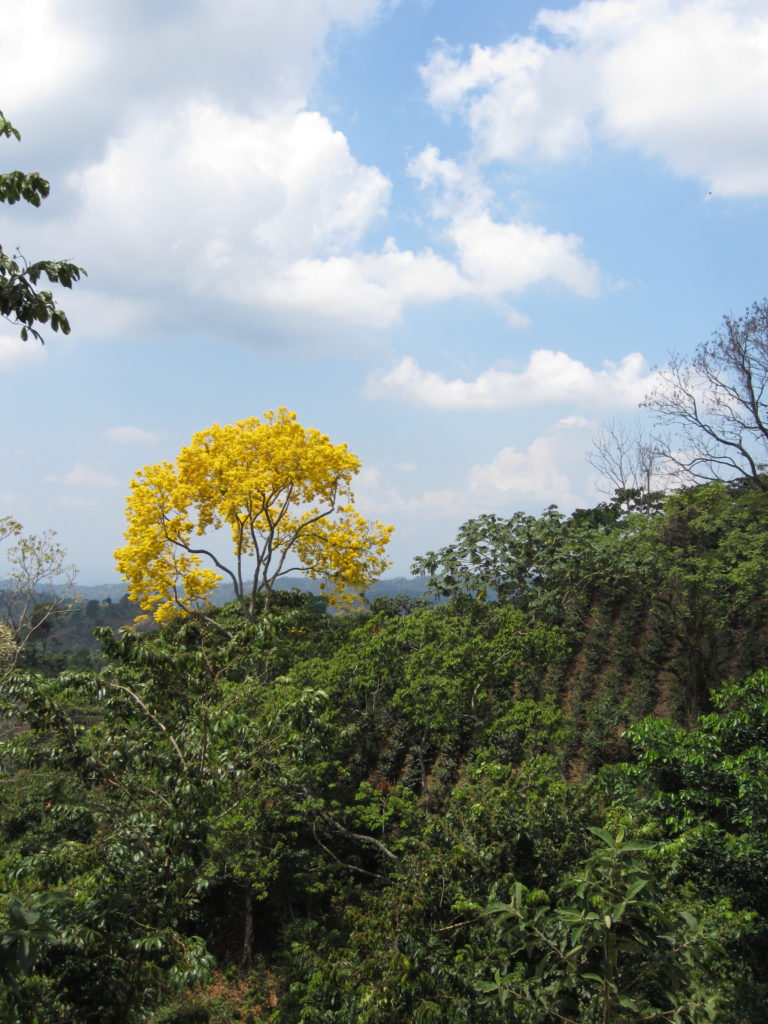
CML: Writing the book and spending time with the people and the material at the heart of this article are what turned me into a coffee drinker, rather than the reverse, weird as that is. I’ve always been more of a tea drinker – coffee often gives me the jitters – but I ended up living with a family who own a coffee finca (plantation) called Finca Perú-París while in Tapachula and, well, it just felt rude not to drink it! Plus, there is something to be said about drinking coffee that hasn’t traveled thousands of miles. The family I lived with – they’re the descendants of some of the earliest large scale coffee planters in the region and I traded document finds about their enterprising ancestors for room and board – export the vast majority of their coffee to a large scale roaster California. They keep enough to roast and drink themselves and to give or sell to friends and family. Usually I come back from research trips with too many books; I came back from Tapachula most trips with a whole suitcase of coffee to give away! Mexican coffee is only just starting to make inroads into the specialty coffee markets, so it’s pretty unlikely most readers have had single origin from the Soconusco. Most of it ends up in Central American or Rainforest blends. But I am starting to see it around as some cooperatives and planters start to build relationships with smaller roasters here in the states.
TD: Since our readers have undoubtedly enjoyed your article–and we’ve pointed them toward your book–can you let them know what you are working on for the future?
CML: My new work is taking some of the questions about institutions and economic growth I asked on a small scale in the first book and examining them on a larger Latin American scale. In thinking about the civil code as something both Mexican and more broadly Latin American (or even Atlantic), this article is partly serving as a bridge between the two. The new project, which I’m calling “Fomenting Development” for the moment, is about the ways that Latin American politicians, thinkers, bureaucrats, and producers at all scales tried to leverage what they saw as the region’s natural bounty into economic growth and political autonomy in the nineteenth century. Rather than thinking about why Latin America fell behind the United States or Western Europe, the book is thinking with all those people in Latin America who tried to get ahead. While different nations of course sought to exploit different kinds of natural resources on different timelines, there are a lot of commonalities and exchanges that historians miss when we focus on specific national histories.
The book will begin with a broad institutional history of these parallel government undertakings and the ways they shaped each other and then follow a number of case studies that look at the different manifestations of this developmentalist impulse. Statistical and geographic institutes that sought to classify landscapes and make them legible, codification projects around labor wherein populations themselves were construed as natural resources, and infrastructure investments that tore through mountains and redirected waterways – things like that. It’s very much a work in progress and Covid has slowed the timeline a bit, but proliferating publications of plans, reports, statistics, and summaries were, happily for me, also a part of this larger impulse. So I’ve been spending lots of time with google books and Hathi Trust and am chipping away at it! Thanks to Law and History Review for providing a venue for setting out some of my initial arguments!


